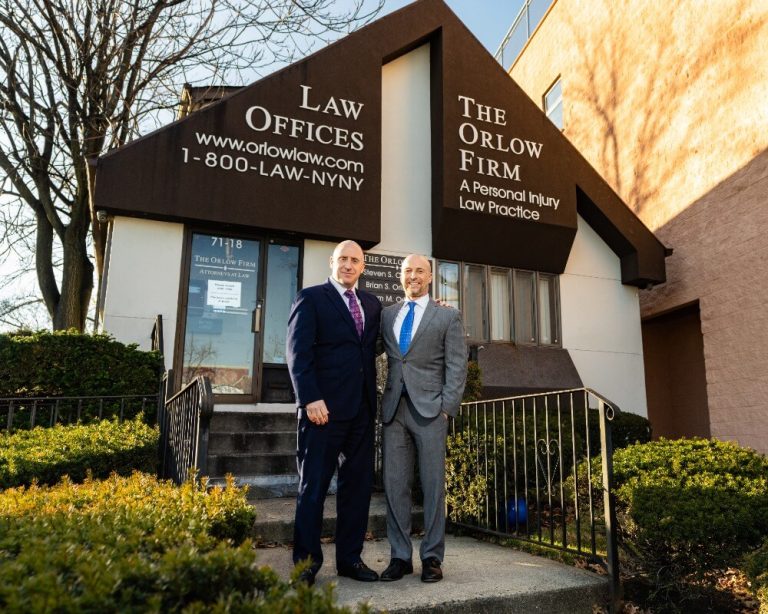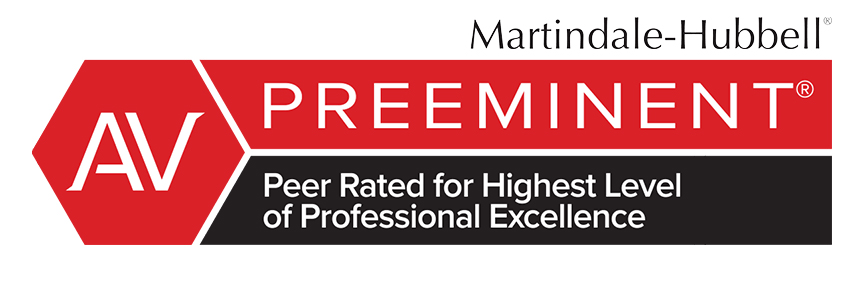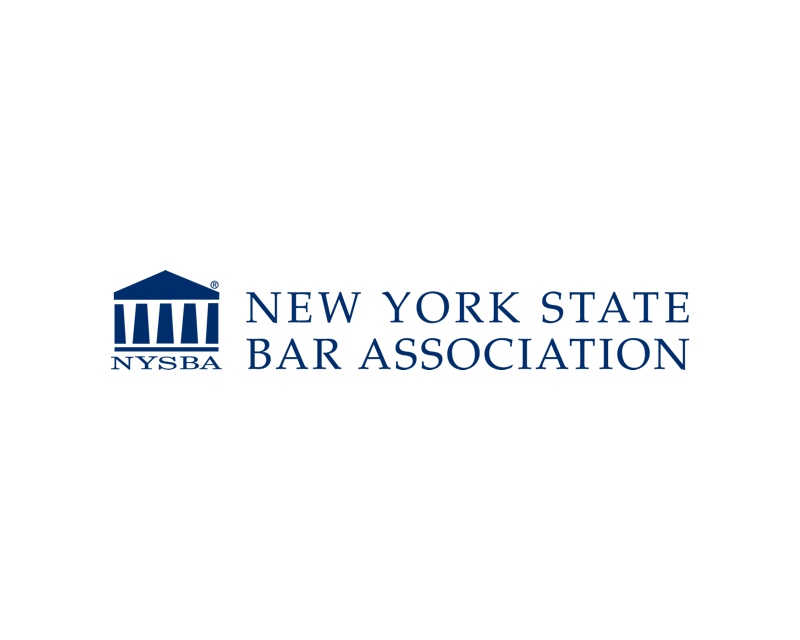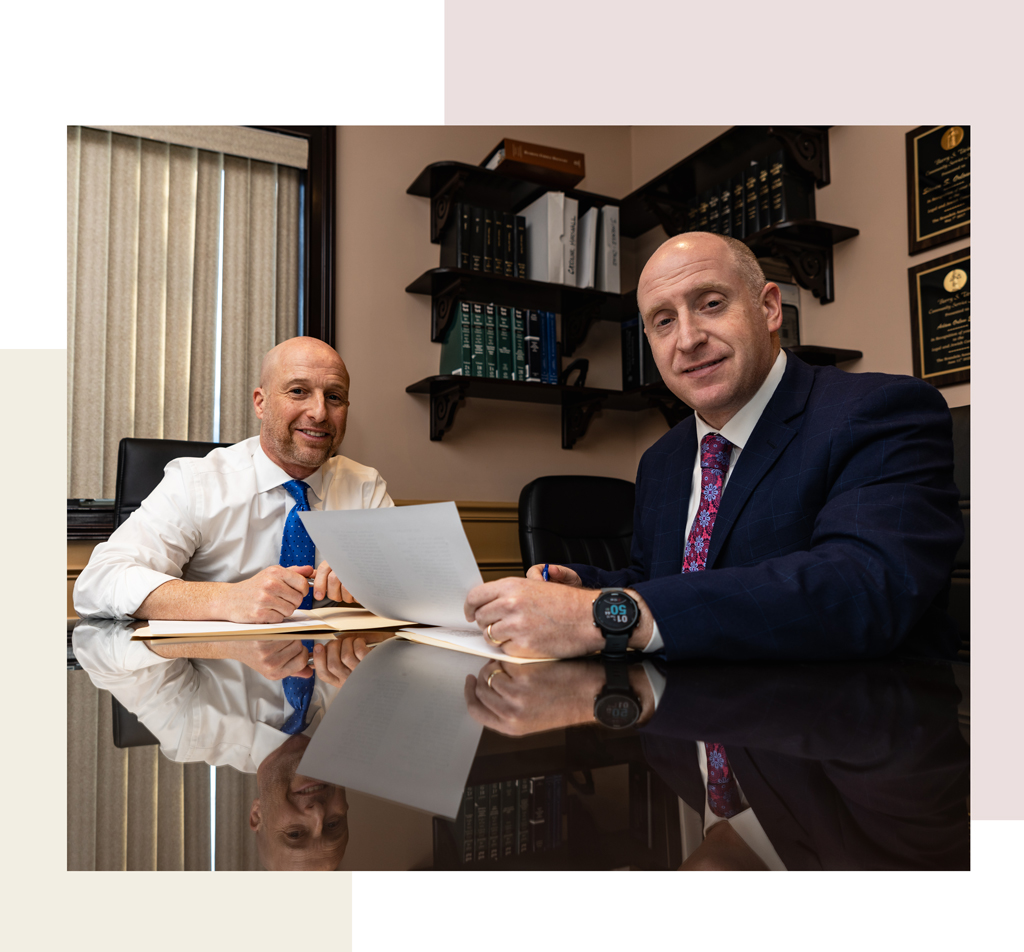What are the Three Elements of Standing to Sue?
Quick Answer: To have standing to sue, a person must meet three basic elements:
| Element | Description |
|---|---|
| Injury-in-Fact | A concrete and actual (or imminent) harm has occurred to the plaintiff. |
| Causation | A clear connection exists between the harm and the defendant’s conduct. |
| Redressability | The court has the power to provide a remedy or relief for the harm suffered. |
Understanding the Elements of Standing to Sue in New York City
When considering a personal injury lawsuit in New York City, one of the first legal hurdles you’ll encounter is the concept of “standing to sue.” This legal principle determines whether you have the right to bring a lawsuit to court. Understanding the elements of standing is crucial for anyone considering legal action. Here, we’ll break down these elements in plain English to help you determine if you might have a valid case.
What is Standing to Sue?
In legal terms, “standing” refers to the ability of a party to demonstrate a sufficient connection to the harm from the law or action challenged to support that party’s participation in the case. Simply put, standing is about whether you have the right to bring your case to court.
The Three Elements of Standing
To establish standing in a New York court, you generally need to satisfy three key elements:
- Injury in Fact
Definition : You must have suffered or be imminently threatened with a concrete and particularized injury. This means the injury must be real and specific to you, not hypothetical or general.
Example : If you were injured in a car accident due to another driver’s negligence, the physical injuries you sustained would qualify as an “injury in fact.” - Causation
Definition : There must be a direct connection between the injury and the conduct you’re challenging. In other words, you need to show that your injury was caused by the defendant’s actions.
Example : If a defective product caused your injury, you must demonstrate that the defect directly led to your injury. - Redressability
Definition : It must be likely, not merely speculative, that a favorable court decision will redress or compensate for the injury.
Example : If you win your case, the court’s decision should be able to provide you with compensation or another form of relief for your injury.
Why is Standing Important?
Standing is a fundamental aspect of the legal process because it ensures that courts are addressing actual disputes where the parties involved have a genuine stake in the outcome. Without standing, a court will not hear your case, regardless of its merits.
How Does This Apply in NYC?
New York City, with its dense population and unique legal landscape, presents specific challenges and opportunities in personal injury cases. Whether you’re dealing with a slip and fall, medical malpractice, or a car accident, understanding the elements of standing is crucial to moving forward with your case.
What to Do If You’re Unsure About Your Standing
If you’re uncertain about whether you have standing to sue, it’s essential to consult with a knowledgeable personal injury attorney. At The Orlow Firm, our experienced lawyers can help you evaluate your situation and determine the best course of action. We understand the complexities of New York law and are here to guide you every step of the way.
For personalized advice and to discuss your case in detail, contact The Orlow Firm at (646) 647-3398. Our compassionate and professional team is ready to help you understand your rights and options.
Standing to sue is a critical component of any legal action in New York City. By understanding the elements of standing, you can better assess your situation and take the necessary steps to protect your rights. Remember, the legal system can be complex, but you don’t have to navigate it alone. Reach out to The Orlow Firm for the guidance and support you need.
Why Standing to Sue Matters in Personal Injury Cases
In personal injury cases, the concept of “standing to sue” is crucial. It determines whether a person has the legal right to bring a lawsuit to court. Understanding why standing matters can help potential plaintiffs, especially in a bustling city like New York, where personal injury incidents are common.
Legal Requirement: Standing is a fundamental legal requirement. Without it, a court will not hear a case, no matter how severe the injury or how clear the negligence. This ensures that courts are only handling cases where the plaintiff has a legitimate interest in the outcome.
Personal Connection to the Case: To have standing, you must demonstrate that you have suffered a direct and personal injury. This means that the harm you experienced is not hypothetical or abstract but rather a concrete injury that affects you personally. In New York City, where accidents can happen in various ways—from construction site mishaps to slip and fall incidents—proving this personal connection is essential.
Ensures Judicial Efficiency: Standing helps maintain judicial efficiency by filtering out cases that do not belong in court. By ensuring that only those who are directly affected by an issue can sue, the courts can focus on resolving disputes that genuinely require legal intervention. This is particularly important in NYC, where the court system handles a high volume of cases.
Prevents Frivolous Lawsuits: Standing acts as a barrier against frivolous lawsuits that could otherwise clog the legal system. It ensures that the plaintiff has a real stake in the case’s outcome, which helps maintain the integrity of the legal process.
Establishes the Framework for Legal Arguments: The elements of standing—injury, causation, and redressability—form the basis for the legal arguments that will be presented in court. By proving these elements, you lay the groundwork for a strong case. In New York, where legal battles can be complex, having a clear framework is invaluable.
Understanding why standing to sue matters is the first step in navigating a personal injury case. If you’re unsure whether you have standing, or if your standing is being challenged, consulting with experienced attorneys can provide clarity and guidance. The Orlow Firm is here to help you understand your rights and determine the best course of action. For personalized advice, call us at (646) 647-3398.
Common Challenges with Establishing Standing in NYC
Establishing standing to sue in New York City can be a challenging process, particularly in personal injury cases. Legal standing is a critical element that determines whether a plaintiff has the right to bring a lawsuit to court. Here are some common challenges individuals may face when attempting to establish standing in NYC:
- Demonstrating Injury: One of the fundamental requirements for standing is to show that you have suffered a concrete and particularized injury. This means that the harm must be specific to you and not just a generalized grievance that could apply to anyone. In personal injury cases, this often involves providing medical records or expert testimony to substantiate the physical or emotional harm experienced.
- Proving Causation: Another challenge is establishing a direct link between the defendant’s actions and the injury suffered. In a bustling city like New York, where multiple parties or factors could contribute to an incident, isolating the defendant’s liability can be complex. For instance, if you slipped and fell on a sidewalk, you must prove that the property owner’s negligence directly led to your fall, rather than other unrelated factors.
- Redressability: To establish standing, you must demonstrate that a favorable court decision will likely redress or correct the harm suffered. This can be difficult if the injury is ongoing or if there are multiple potential causes, making it unclear whether a court ruling can effectively remedy the situation.
- Third-party Standing: In some cases, individuals may attempt to sue on behalf of another person, such as a family member who is incapacitated. New York courts typically require a close relationship between the person bringing the suit and the injured party, as well as a clear indication that the injured party cannot advocate for themselves. Establishing this can be particularly challenging without proper legal guidance.
- Complex Legal Precedents: New York courts have a body of legal precedents that can complicate the standing analysis. Understanding and navigating these precedents requires a nuanced understanding of state and local laws, which can be daunting for individuals without legal experience.
These challenges highlight the importance of consulting with an experienced personal injury attorney who understands the intricacies of establishing standing in New York City. If you’re unsure whether you have standing to sue, or if you’re facing challenges in proving your right to bring a lawsuit, contacting a knowledgeable attorney can provide clarity and guidance. For assistance, consider reaching out to The Orlow Firm at (646) 647-3398 for a consultation.
How to Determine if You Have Standing to Sue in New York
Determining whether you have standing to sue in New York involves understanding a few key legal principles. In the context of personal injury law, standing refers to your legal right to bring a lawsuit in court. New York courts require specific criteria to be met to establish standing, ensuring that the individual bringing the suit is adequately connected to and affected by the issues at hand. Here’s a breakdown of how to determine if you have standing to sue in New York:
- Injury in Fact: You must demonstrate that you have suffered an actual injury. This injury can be physical, emotional, or financial, but it must be concrete and particularized, meaning it affects you in a personal and individual way. For instance, if you were injured in a construction accident in NYC, your physical injuries and the associated medical costs would constitute an injury in fact.
- Causation: There must be a causal connection between the injury and the conduct you are alleging. This means that the injury must be fairly traceable to the defendant’s actions and not the result of a third party’s independent actions. For example, if you slipped on a poorly maintained sidewalk in New York City, you need to show that the property owner’s negligence directly led to your fall and subsequent injuries.
- Redressability: It must be likely, as opposed to merely speculative, that a favorable court decision will redress the injury. This means that the court must be able to provide a remedy that will address your injury, such as awarding damages for medical expenses or lost wages.
In New York City, these elements ensure that the courts are addressing genuine disputes where the parties have a legitimate interest in the outcome. If you believe you meet these criteria, it’s crucial to gather evidence that supports each element. This might include medical records, accident reports, or eyewitness statements.
Understanding these requirements can be complex, especially when dealing with the aftermath of an injury. If you are unsure about your standing or need assistance in evaluating your case, consider reaching out to a qualified attorney. The Orlow Firm can offer guidance and help you determine the viability of your personal injury claim. For personalized assistance, contact us at (646) 647-3398.
The Role of Injury in Establishing Legal Standing
When it comes to establishing legal standing in personal injury cases, the role of injury is a critical component. In the simplest terms, injury refers to the harm or damage suffered by an individual, which can be physical, emotional, or even financial. This harm is what gives the individual the right to bring a lawsuit against the party responsible for causing the injury.
The Importance of Injury in Legal Standing
For a plaintiff to have standing to sue in New York City, they must demonstrate that they have suffered a concrete and particularized injury. This means the injury must be real and specific to the individual, not a generalized grievance shared by the public at large. Here are the key reasons why injury plays such a vital role in establishing legal standing:
- Proof of Harm: The plaintiff must show that they have suffered an actual injury, whether physical, emotional, or financial. This establishes the existence of a legitimate grievance that the court can address.
- Connection to Defendant’s Conduct: The injury must be directly linked to the defendant’s actions or negligence. This connection, known as causation, is crucial in proving that the defendant’s conduct is responsible for the plaintiff’s harm.
- Legal Remedy: The injury must be one that the court can remedy, which typically involves financial compensation for the damages suffered. The court must be able to provide a solution that addresses the harm experienced by the plaintiff.
Types of Injury Recognized in NYC Personal Injury Cases
In New York City, personal injury cases recognize various types of injuries that can establish standing to sue. These include:
- Physical Injuries: This encompasses any bodily harm, such as broken bones, cuts, or internal injuries. For instance, a construction worker injured in a fall from a scaffold, resulting in broken bones and the need for surgery, clearly demonstrates a physical injury.
- Emotional Distress: Psychological harm, such as anxiety or depression resulting from an incident, can also be grounds for a lawsuit. Emotional distress must be significant and supported by medical evidence.
- Financial Losses: Economic damages, such as loss of income or medical expenses incurred due to the injury, are also considered when establishing standing. These losses must be directly tied to the incident in question.
Examples from New York City
Consider a scenario where a pedestrian in NYC is struck by a vehicle while crossing the street, resulting in a fractured hip that requires surgery. This individual has a clear physical injury that can be directly linked to the driver’s actions, thus establishing standing to sue for compensation.
In conclusion, the role of injury in establishing legal standing is foundational in personal injury cases. Without a demonstrable injury, a plaintiff cannot pursue legal action. If you or a loved one has suffered an injury and are considering legal action, consulting with experienced attorneys like those at The Orlow Firm can provide guidance on your standing to sue. For a free consultation, contact us at (646) 647-3398.
How New York Courts Evaluate Standing to Sue
In New York, the concept of “standing to sue” is a critical component that courts evaluate to determine whether a party has the legal right to bring a lawsuit. This evaluation is crucial in personal injury cases where the plaintiff must demonstrate a legitimate interest in the case’s outcome. Understanding how New York courts assess standing can help you better navigate the legal process if you’re considering filing a claim.
1. Concrete Injury: New York courts require the plaintiff to show that they have suffered a concrete and particularized injury. This means the injury must be real and specific to the individual, not hypothetical or abstract. For instance, if you were injured in a car accident in NYC, you would need to demonstrate specific physical or financial harm resulting from that incident.
2. Causation: The plaintiff must establish a direct link between the injury and the defendant’s actions. New York courts will evaluate whether the defendant’s conduct was the actual cause of the injury. In a slip and fall case, for example, you would need to prove that the property owner’s negligence directly led to your fall and subsequent injuries.
3. Redressability: The courts will assess whether a favorable court decision can redress the injury. This means that the court’s intervention should have the potential to provide a remedy for the harm suffered. If your injury can be compensated through damages or other legal remedies, New York courts are more likely to find that you have standing to sue.
4. Legal Precedents and Statutes: New York courts often rely on previous legal decisions and statutes to guide their evaluation of standing. They consider whether the case aligns with established legal principles and whether the plaintiff’s interest is one that the law seeks to protect. For example, certain consumer protection statutes may explicitly grant standing to sue to individuals harmed by deceptive business practices.
5. Public Policy Considerations: Finally, New York courts may consider broader public policy implications of granting standing. This includes evaluating whether allowing the lawsuit to proceed serves the public interest or upholds important legal rights. In cases involving environmental or public health issues, courts may be more inclined to grant standing if the case addresses significant societal concerns.
Understanding how New York courts evaluate standing to sue can be complex, especially when dealing with the aftermath of a personal injury. If you have questions about your standing or need assistance with your case, don’t hesitate to reach out to The Orlow Firm for guidance. Our experienced attorneys can be reached at (646) 647-3398 and are here to help you understand your legal rights and options.
Legal Precedents Affecting Standing to Sue in NYC
In New York City, legal precedents play a crucial role in shaping the interpretation and application of the elements of standing to sue. Standing is a legal principle that determines whether a party has the right to bring a lawsuit in court. For those involved in personal injury cases in NYC, understanding how past court decisions affect standing can be pivotal in pursuing or defending a claim.
Over the years, New York courts have established several key precedents that influence standing to sue. These precedents often clarify the requirements for standing, which generally include:
- Injury in Fact: The plaintiff must demonstrate that they have suffered or will imminently suffer a concrete and particularized injury. This injury must be actual or imminent, not hypothetical.
- Causation: There must be a direct connection between the injury and the conduct being challenged. This means that the injury can be traced to the defendant’s actions.
- Redressability: It must be likely, not speculative, that a favorable court decision will redress the injury.
One significant case that impacts standing in New York is Society of Plastics Industry, Inc. v. County of Suffolk, which established a framework for determining standing in environmental cases. Although this case focused on environmental law, its principles are often cited in other contexts, including personal injury, to emphasize the necessity of showing a distinct and palpable injury.
Another notable precedent is the ruling in New York State Ass’n of Nurse Anesthetists v. Novello, which reinforced the importance of the injury being specific to the plaintiff, rather than a generalized grievance affecting the public at large. This decision underscores the need for plaintiffs in personal injury cases to clearly articulate how their injury differs from that of the general population.
Moreover, New York courts have been known to take a stringent approach to standing in cases involving public interest or taxpayer suits, as demonstrated in Stark v. Goldberg. This case highlighted that plaintiffs must have a personal stake in the outcome, further emphasizing the individualized nature of legal standing.
These precedents illustrate the complexities involved in establishing standing to sue in NYC. Legal professionals, like those at The Orlow Firm, are well-versed in navigating these nuances to ensure that your case is presented effectively. If you have questions about your standing in a personal injury case, contacting an experienced attorney at (646) 647-3398 can provide clarity and guidance tailored to your specific situation.
What to Do If Your Standing to Sue is Challenged
Facing a challenge to your standing to sue can be a daunting experience, especially when you’re already dealing with the aftermath of an injury. If someone questions your right to bring a lawsuit, it essentially means they are disputing whether you have the legal ability to file the case. Here’s what you can do if your standing to sue is challenged in New York City:
- Understand the Basis of the Challenge: First, it’s crucial to understand why your standing is being questioned. Common reasons include allegations that you haven’t suffered a direct injury, or that the injury cannot be traced to the defendant’s actions. Understanding the specifics of the challenge will help you address it effectively.
- Gather Evidence: Collect any evidence that supports your claim of being directly affected by the defendant’s actions. This can include medical records, eyewitness accounts, or any documentation that links your injury to the incident in question. In NYC, having robust evidence is critical due to the complex nature of legal proceedings.
- Review Legal Precedents: New York courts often rely on precedents to make decisions. Research past cases with similar standing challenges to understand how courts have ruled. This can provide insights into how to strengthen your argument.
- Consult with an Attorney: It’s advisable to seek legal counsel if your standing is being challenged. An experienced personal injury lawyer can help you navigate the complexities of New York’s legal system and offer strategies to counter the challenge. The Orlow Firm can provide guidance tailored to your specific situation. Call us at (646) 647-3398 for a consultation.
- Prepare for a Hearing: If the challenge leads to a court hearing, be prepared to present your case. This includes organizing your evidence, understanding the legal arguments, and possibly preparing witness testimonies. Your attorney will play a crucial role in representing your interests during this process.
- Consider Alternative Resolutions: Sometimes, resolving the issue outside of court may be in your best interest. This could involve negotiations or mediation to reach a settlement, especially if the standing challenge is part of a broader dispute.
Addressing a challenge to your standing is a critical step in maintaining the viability of your lawsuit. By taking these actions, you can effectively respond to the challenge and continue pursuing the justice and compensation you deserve. For personalized assistance, don’t hesitate to contact The Orlow Firm at (646) 647-3398.
Consulting The Orlow Firm for Standing to Sue Issues
When it comes to understanding and navigating the elements of standing to sue, having a knowledgeable legal team by your side can make all the difference. The Orlow Firm is dedicated to helping individuals in New York City determine their standing to sue, particularly in personal injury cases. Our experienced attorneys provide the guidance and support needed to effectively evaluate and pursue your legal options.
Why Consult The Orlow Firm?
- Experience in NYC Personal Injury Law: With decades of experience handling personal injury cases in New York City, our team understands the complexities of local laws and how they impact your standing to sue. We have a proven track record of successfully representing clients in a variety of personal injury cases, from construction accidents to premises liability.
- Comprehensive Case Evaluation: Establishing standing to sue requires a thorough understanding of several legal elements, including injury, causation, and redressability. Our attorneys will conduct a detailed evaluation of your case to determine whether you meet these legal requirements.
- Personalized Legal Strategy: Every case is unique, and our approach is tailored to fit the specific circumstances of your situation. We will work closely with you to develop a legal strategy that aligns with your goals and maximizes your chances of a favorable outcome.
- Compassionate and Supportive Representation: We recognize the stress and uncertainty that can accompany legal proceedings, especially when dealing with injuries. Our team is committed to providing compassionate support throughout the legal process, ensuring you feel informed and empowered every step of the way.
If you are unsure about your standing to sue or need assistance with a personal injury case in New York City, reaching out to The Orlow Firm can provide the clarity and confidence you need. Our team is ready to answer your questions and help you navigate the legal system effectively.
For a consultation or more information about how we can assist you, please contact The Orlow Firm at (646) 647-3398. Let us help you understand your rights and explore your legal options.
Next Steps After Determining Standing in Your Case

Once you have determined that you have standing to sue in your personal injury case, there are several important steps to take to ensure your case progresses smoothly. Standing is just the initial hurdle; successfully navigating the legal process involves careful planning and professional guidance. Here’s what you should consider doing next:
- Gather Evidence: Collect all relevant documentation and evidence related to your injury. This includes medical records, photographs of the accident scene, witness statements, and any correspondence with insurance companies. Thorough evidence collection can significantly strengthen your case.
- Consult with a Personal Injury Lawyer: Engaging a knowledgeable personal injury attorney is crucial. A lawyer can help you understand the nuances of your case, advise you on the best legal strategies, and represent your interests in court. At The Orlow Firm, our experienced attorneys are ready to assist you. Call us at (646) 647-3398 for a consultation.
- File the Necessary Legal Documents: Your attorney will help you file the appropriate legal documents to initiate your lawsuit. This typically includes a complaint outlining your claims and the basis for your standing. Filing these documents correctly and timely is essential to avoid any procedural issues that could jeopardize your case.
- Prepare for Discovery: The discovery phase involves exchanging information between the parties involved in the lawsuit. Be prepared to provide documentation and answer questions related to your injury. This phase is critical for building your case and uncovering information that supports your claims.
- Consider Settlement Options: Many personal injury cases are settled out of court. Discuss potential settlement offers with your attorney to determine if they meet your needs. Your lawyer will negotiate on your behalf to ensure you receive a fair settlement.
- Prepare for Trial: If a settlement cannot be reached, your case may go to trial. Your attorney will guide you through the trial process, helping you understand what to expect and how to present your case effectively.
- Stay Informed and Involved: Stay engaged with your case by maintaining communication with your attorney and being responsive to requests for information. Your involvement can make a significant difference in the outcome of your case.
Each step in the legal process requires careful attention and knowledge. If you have questions about your standing to sue or need assistance navigating your personal injury case, don’t hesitate to reach out to The Orlow Firm. Our team is dedicated to providing compassionate and professional legal support. Contact us at (646) 647-3398 to discuss your case.
Cindy Cordova is a seasoned legal writer with over seven years of experience crafting clear, informative, and professional content for law firm websites. With a B.A. in English from Trinity Christian College, she combines her strong writing background with a deep understanding of legal topics to help firms connect with their clients through trustworthy and accessible content.










